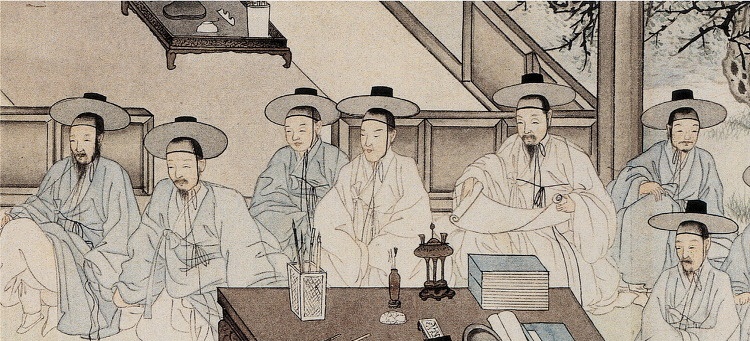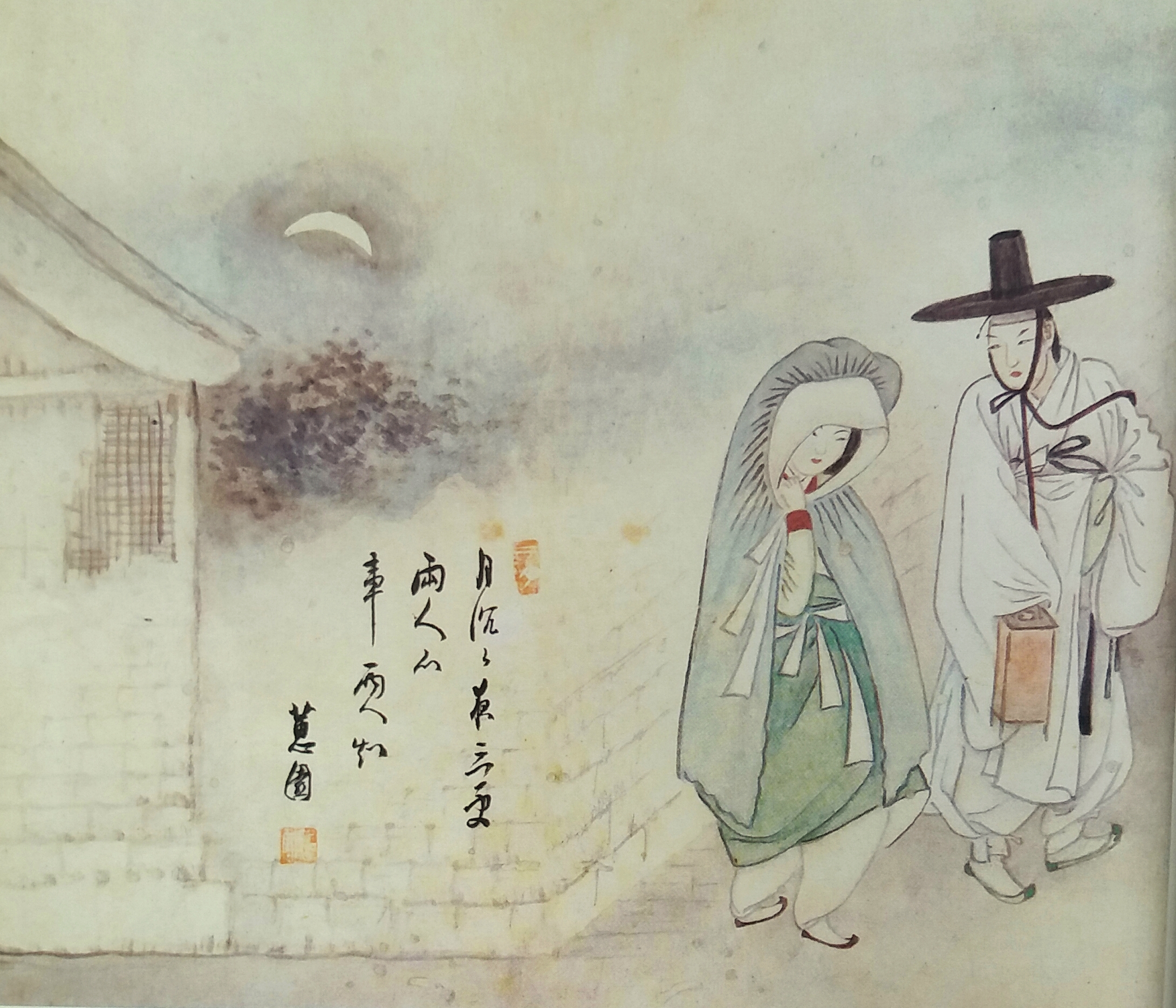Devitt Khuallalmuan Ngaihte, Imphal, Manipur
First of all, let us understand what a ‘society’ is. A society is a group of individuals involved in social interactions having a collective interest, language, culture and traditions. The Korean society since time immemorial has been framed by order and hierarchy and the demand to meet expectations of the society. It emphasized on family values, hierarchy between classes, older and younger people. Also, the Korean people have been very hardworking, and the country has undergone profound economic developments and transformations in a short span of time. In this article, I will discussing about the the drastic transitions that took place in the Korean society at the beginning of the Joseon Dynasty.

Joseon (조선) is one of the well-known and notable dynasties which ruled the Korean peninsula for over 5 centuries (1392-1910) until the Japanese colonization in 1910. The Joseon dynansty began with the overthrowing of Goryeo Dynasty by a military commander named, Yi Seong-Gye (이성계) who assumed himself the title of ‘Taejo of Joseon’ and ruled as the first king of the Joseon Dynasty from 1392 to 1398. With the Joseon dynasty coming in the power, Neo-Confucianism became the state ideology and the society was greatly influenced by the principles of the same and became hierarchical and classist in nature. The society in Joseon was divided into four major classes as ranked in descending order–Yangban (or the aristocracy), Chungin (or the upper-middle class), Sangmin (or the commoners) and Cheonmin (or the ‘outcasts’ commoners). The monarch and the royal family were considered the highest and most respectable class in the society.

Yangban (양반)
Yangban was the highest class in Joseon class system. People belonging to this class would hold the highest portion of the power dynamics and enjoyed most authority in the society. This class was also referred to as the land-owning class and an extremely wealthy class. They were also exempted from the military service and were given the permission to collect the taxes from the lower class. To belong in this class, one had to pass the national civil examination called Gwageo (과거). If none of the family members could pass Gwageo, in three generations, their families were deprived of the Yangban status and its privileges. This examination was required to be passed by the two groups within Yangban class namely, civil officials (munban, 문반) and military officials (muban, 무반). Notably, Yangban class was neither considered a part of aristocracy nor was hereditary. Hence, to enjoy the priviledges of the Yangban class, one had to pass the extremely difficult national civil examination. Once, passed, the entire family of the official would enjoy the Yangban status for the next three generation.

Chungin (중인)
“Chungin” was the second-highest class in the society. People belonging to this class were considered as upper-middle-class of the society. It consisted of highly educated specialists, artists, astrologers, physicians, accountants, and low-level bureaucrats. To belong to this class, one had to pass the technical efficiency examination, called the Chapkwa, and hence, could become a Chungin. Chungin, similar to Yangban were also exempted from military service and paying taxes.

Sangmin (상민)
Sangmin was the third-highest class in the society comprising of the working-class commoners like peasants, farm labourers, small merchants, fisher-men, crafts-men etc. Heavy taxes were imposed on the people belonging to this class and they were also subjected to military drafts, and therefore, did not have privileges which the other two classes, Yangban and Chungin had. Since, the people belonging to this class were not wealthy, they were often oppressed by the upper classes. This section of the society had the highest number of people and they lived a very humble life.

Cheonmin (천민)
People belonging to Cheonmin class, were placed at the bottom of the societal structure during the Joseon period. People were considered as an outcast. This class consisted of people working as butchers, shoe-makers, shamans, and female entertainers. Since, the society was purely based on the principles of Neo-Confucianism and the privilege status was given based on the occupation, the works of Cheonmin class were considered as unclean and very immoral. They were offered low wages, and had to endure a hard time living in such a society.

This strict class system that was followed for centuries was finally abolished in 1894 due to the trade corruption of Yangban classess towards the end of the Joseon era. After the class system was abolished, the Korean society entered a stage of new modern reforms with influences from the Western world. Till today, such classes are still prevalent in some under-developed and developing countries like India. In this modern world, the class system needs to be abolished worldwide, as it creates discrimination and violates the human rights of a person. With the increasing popularity of K-dramas like The Return Of Iljimae, Mr. Queen, My Sassy Girl, 100 Days My Prince the portrayal of the distinct classes and functioning of the society during the Joseon dynasty can be observed.
We hope that this article could help you in understanding a little bit about the History of Korean culture in detail. Please share your feedback in the comments!

Well done! Good research 🙂
Thanks!!😊
Very well explained 🙂
It’s a really good article.
Thank you!!😄
This is such a well researched article! Amazing work!
Thanks!!😊
Nice article
Thank you!!😊
Well done
Thanks!!❤️
Well written. 😊
A very well-researched article! This is so informative and explains the structure of society during Joseon period very well! 🙂
Very informative and detailed article! 👏👏
Thank you so much!!💜
Thanks!!
Amazing write up🙌🙌 keep going
😊😊💜
Woah this gave so much knowledge about the Korean Culture in detail 😍😍so so well written 💜
😊💜
very informative and well written!!
💜💜💜
A beautifully summarised and informative article..Hope to read many more penned by you👍
Thank you!!😊💜
Amazing…..i learnt something new..💜
😊💜
So informative it is
Very well written!
Wonderfully written and very informative article.. 👌
Very well written article, definitely informative!!
Definitely helpful for people who want to learn more about the aspects of korean history
The article is extremely well written! 👍
Thank you!!💜
Thank you everyone for sparing your precious time for reading my article. I will try my best to write more intersting articles for everyone to read. Thank you everyone for all your kind and encouraging comments😊💜
Loved the information 👍
Well written☺
Good job
Really Informative 💕
Beautifully written 😍✨
This article has been amazingly written. I just loved reading it!!
Excellently worded, very informative 👍👍 Good Job.
Well written and informative. I learned many things about Korean History and it was very helpful.🤗🙂
Well written and informative. I learned many things about Korean Dynasty and it was very helpful.🤗🙂
This article is really worth all the praise it’s getting.👌
Beautifully written … informative and interesting read 💜
Well written and informative. I learned many things about Korean Dynasty and it was very helpful 🤗🙂
Really Informative article
👍👍👍👍
Really nice 👍
Beautifully written ..informative and interesting read 💜
This article makes me want to know more. Great Work.
Good work! Really informative!
Beautifully written .. informative and interesting read💜
Well written
I was collecting some data about Joseon Dynasty. Your article helped me a lot. It’s written beautifully.
very well written i have seen many Joseon period dramas and now i can understand the difference clearly.
Well written article. This explains about Joseon Dynasty very well. Thanks for this informative article
Woah!
Such detailed information on Joseon Dynasty. 👌🏻
A really informative and well-written post.